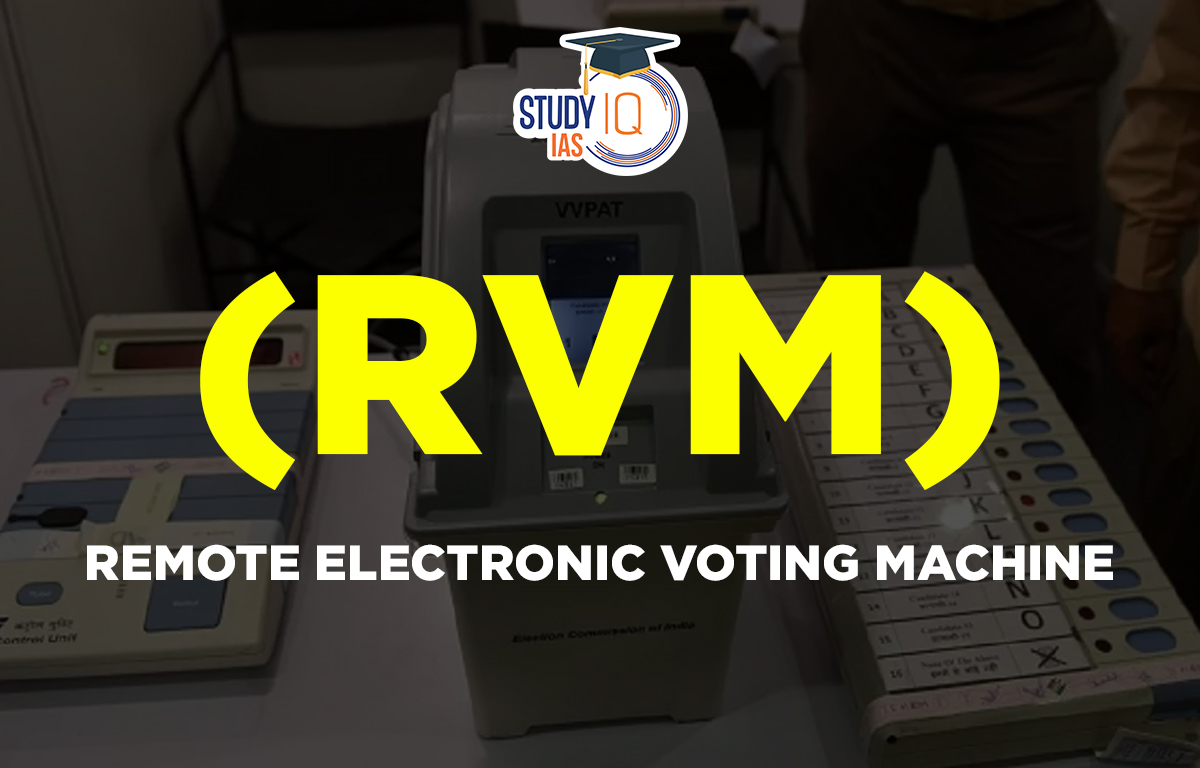Table of Contents
In News: Election Commission (EC) has developed a prototype of a remote electronic voting machine (RVM) for domestic migrant voters.
Need for Remote Voting
- Stagnation in voter turnout: About 30 crore electors were not exercising their franchise, apart from differential voter turnout in different states and UTs.
- Migration-based disenfranchisement: As per the 2011 census, there are nearly 45.36 crore migrants in India– amounting to approximately 37 per cent of the country’s population.
- Against EC’s “No voter left behind” goal: A large population is denied its franchise due to exigencies of work or lack of resources to travel.
About Remote Electronic Voting Machine (RVM)
- Aim: Improve voter turnout and ensure the participation of migrants in elections.
- It will use a Multi-Constituency RVM for migrant voting, i.e it would cater to voters from multiple constituencies of a state.
- It is developed by a public sector undertaking: Bharat Electronics Limited (BEL) and the Electronics Corporation of India Limited (ECIL).
- It can handle up to 72 constituencies from a single remote polling booth.
- It will have the same security system and voting experience as the EVM.
Features of RVM
- It is a standalone, non-networked system having the same security features as the existing Indian EVMs and provides the same voting experience to the voter as the EVM.
- The RVM system is essentially a modified version of the existing EVM system.
- A single Ballot Unit (BU) can cater to multiple AC/ PCs at a single polling station by using a dynamic ballot display instead of the usually printed paper ballot sheet on BU.
Process of Remote Voting using RVM
- The voter should pre-register for the remote voting facility by applying online/offline within a pre-notified time, before elections in his/her home constituency commence.
- Voter details will be verified at the home constituency and the voter’s request for remote voting will be approved after successful verification by marking him/her as a remote voter to participate in elections.
- Special multi-constituency remote voting polling stations will be set up in the places of the voter’s current residence.
Significance of RVM
- Increasing voters’ participation: It will enable a voter, who is listed in constituencies, to exercise voting rights from a single machine.
- Ease of Voting: Migrant voters need not travel to their home district to exercise their voting rights.
- Vibrant Democracy: It will enable approximately 30 crore electors, currently not exercising their franchise, to vote.
- Safety and Security: The remote e-voting machine will be a standalone device which doesn’t need connectivity to operate.
Concerns with RVM
- Inclusive definition of migrants: Migrants are not a uniform and defined class, with fluid identities, locations and situations.
- Trust Issue: Various countries have already rejected EVMs for paper-based ballots.
- Hacking Probability: RVMs with more technological components are bound to raise further questions.
- Lack of Level Playing Field: Remote voting can theoretically provide an added edge to bigger parties and richer candidates who can campaign across the constituency and beyond.
- Model Code of Conduct: There is no clarity about how the Model Code of Conduct will be implemented in the remote constituencies.
About EVM or Electronic Voting Machines
- They are used to cast votes without revealing their identity.
- They replaced paper ballots in local, state and general (parliamentary) elections in India.
- Indian EVMs are standalone (not connected to the internet) and have a one-time programmable chip, making tampering through the hardware port or a Wi-Fi connection impossible.
- Voter Verified Paper Trail Audit (VVPAT) machine: To help verify that the EVM had recorded the vote correctly as intended by the voter.


 Topological Materials: The Future of Qua...
Topological Materials: The Future of Qua...
 China’s Deep Sea Station in South Chin...
China’s Deep Sea Station in South Chin...
 Project ICE-CRUNCH: India-Switzerland Co...
Project ICE-CRUNCH: India-Switzerland Co...





















